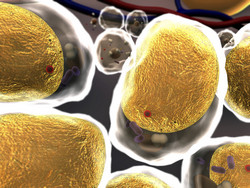Trending science: How diversity of bacteria influences obesity
The prevalence of obesity has tripled in many countries of the WHO European Region since the 1980s, and the numbers of those affected continue to rise at an alarming rate. Obesity is already responsible for 2–8 % of health costs and 10–13 % of deaths in different parts of the Region. However, obesity is not restricted to humans – our canine companions are also at risk of the disease. In fact, two-thirds of veterinary professionals believe that pet obesity is the single biggest health issue facing domestic animals throughout Europe, and early death is the sad and most serious consequence of the condition. A new study has found that human and canine obesity share some similarities. As Science magazine reports, ‘Obese people have a less diverse array of bacteria living in their guts than do thin people—and the same holds true for dogs.’ According to the study abstract, which was published this month in the Journal of Veterinary Internal Medicine, seven Beagle dogs were fed commercial food over a period of six months to increase their weight and seven other Beagle dogs were fed a restricted amount of the same diet to maintain optimal body condition over a period of six months. Researchers found that the seven Beagles in the first group gained an average of 4.93 kilograms—about 67 % of their initial average weight. Science magazine elaborates: ‘When the researchers examined the fecal samples collected from both groups after six months, they found that the guts of obese beagles contained a smaller diversity of bacteria than those of the other dogs. What’s more, microbes from the phylum Firmicutes were the predominant group in the lean dogs, whereas Gram-negative bacteria called Proteobacteria were prevalent in the obese group.’ As Science reports, ‘The researchers speculate that an abundance of Proteobacteria may lead to an increase in lipopolysaccharide, a major component of the cell wall of Gram-negative bacteria, which has been linked to weight gain in mice.’ The study concludes that decreased serotonin levels in the obese group might increase the risk of obesity because of increased appetite, and that microflora enriched with gram-negative might be related with chronic inflammation status in obese dogs. However, according to the authors, more research is needed to examine what role gut bacteria may play in the development of obesity, the authors tell us. For more information, please visit: http://onlinelibrary.wiley.com/doi/10.1111/jvim.12455/abstract
Countries
United States



